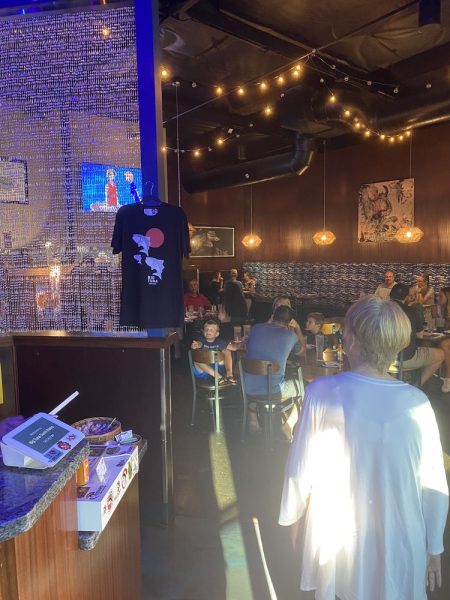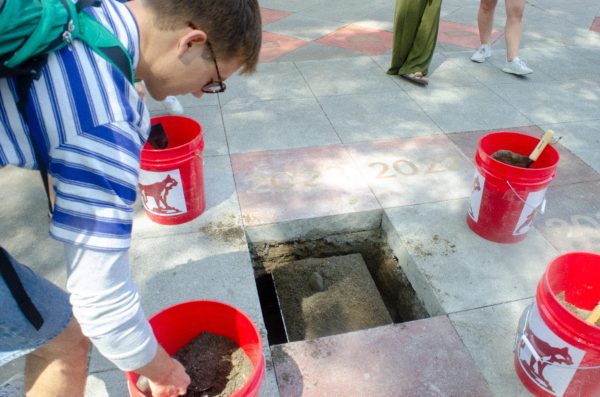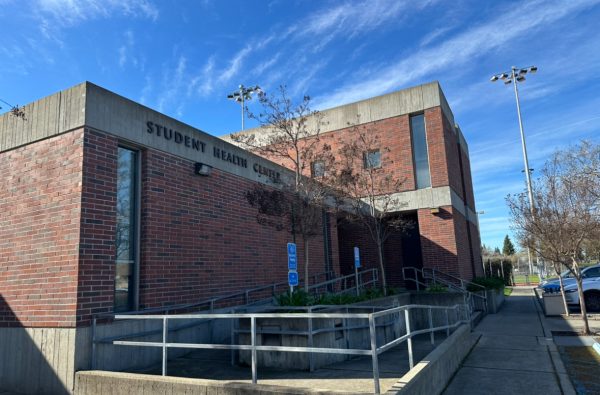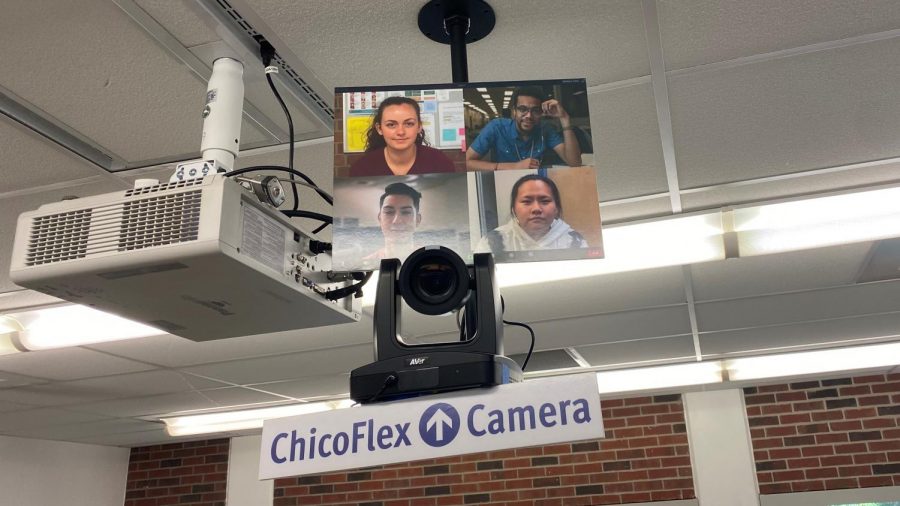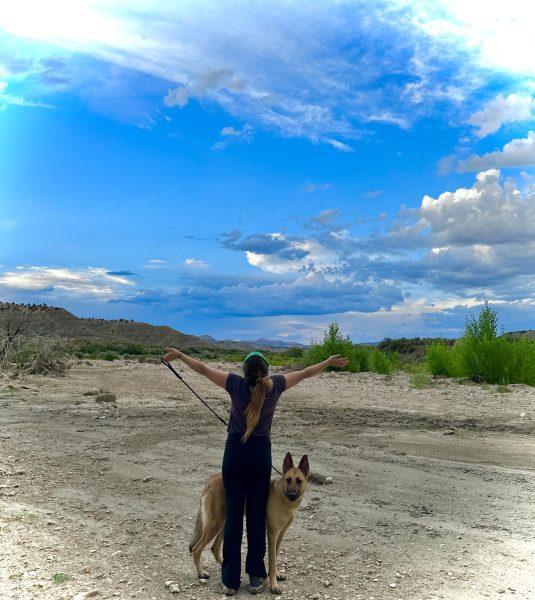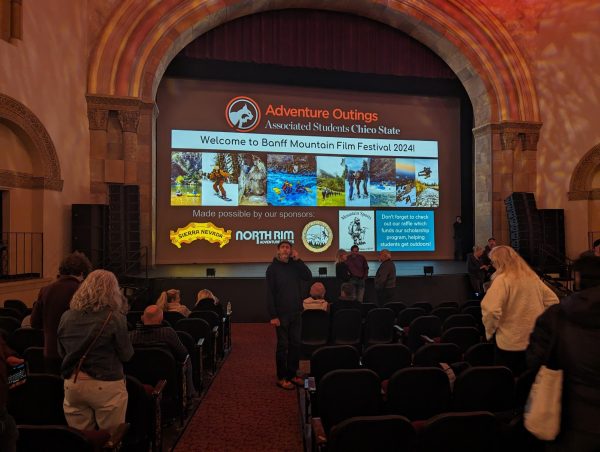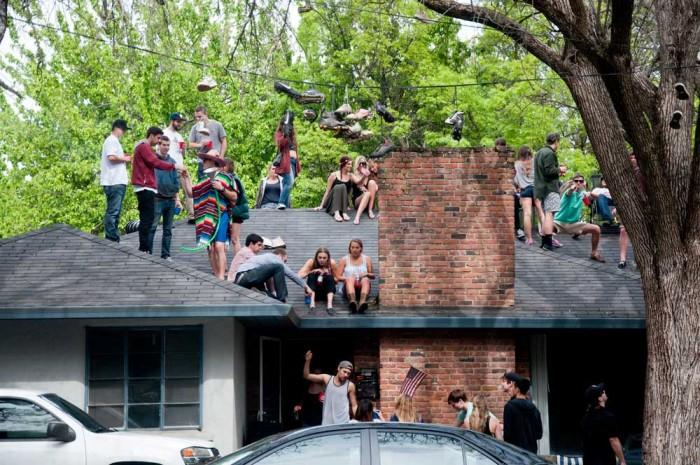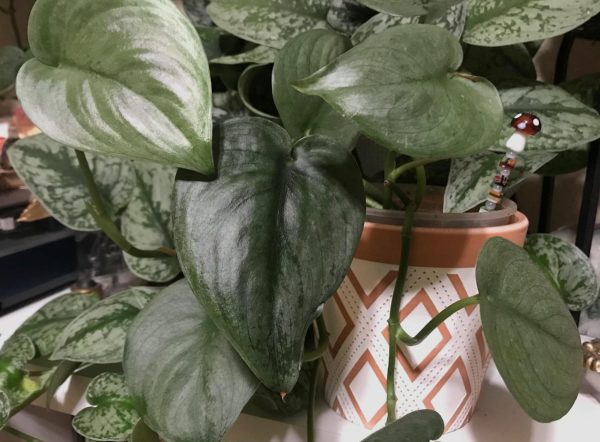Hybrid learning may be the future of higher education
At Chico State, 131 classrooms are equipped with technology that enables the instructor to teach both in-person and virtually. This auto-tracking camera is priced at $2,500. Photo by Aldo Perez.
The pandemic has brought many changes to the world and for so long, it’s been difficult to convince ourselves that things will go back to normal. From non-essential businesses closing, to take-out only restaurants, the world hardly functions the same as it did pre-pandemic.
There is no doubt that the pandemic put a massive strain on the education system. At the peak of the pandemic, schools throughout the country paused in-person teaching for months by opting for a virtual learning environment.
After an entire year of virtual learning, nearly 50% of classes at Chico State are in-person during this fall semester. Cases continue to rise throughout the country mostly due to the Delta variant. Although CSU students are required to be vaccinated and a strict mask policy is enforced, the question remains whether in-person classes are safe or even ethical.
This concern is valid and should be discussed, but personally experiencing in-person classes during COVID has given me a glimpse into what I think the future of higher education holds.
The most prominent change in classrooms is the incorporation of a multi-model learning environment that combines face-to-face and virtual learning.
According to the Chico State website, “The hybrid flexible, or HyFlex, course format is an instructional approach that combines face-to-face and online learning. Each class session and learning activity is offered in-person, synchronously online, and asynchronously online. Students can decide how to participate.”
For this to work, the university decided to turn 131 classrooms into “HyFlex classrooms.” These classrooms are fitted with projectors, touch-panel controllers, microphones and ceiling cameras that automatically follow the professor as they walk around the classroom.
The technology is impressive and it enables students to rotate between face-to-face and virtual learning to ensure that classrooms stay within a safe capacity. It also gives students an opportunity to stay caught up with the course if they are unable to make it to class due to sickness, or if they feel unsafe or uncomfortable returning to the classroom.
This raises the question: Why would the university spend resources to turn over a hundred classrooms into hybrid learning environments so late into the pandemic? The technology that hybrid classes require is far from cheap. A quick Google search shows that a single camera alone can cost upwards of $2,500.
I don’t think virtual learning is permanent, but I imagine universities will continue to embrace the technology we are currently seeing in classrooms.
Universities adapted to the difficulties of the pandemic and I think what came out of this on-going ordeal is a flexibility for students and a novel way to approach learning. Students need this flexibility because we thrive under different conditions. Some students feel less anxious at home and may be more inclined to ask questions by typing them out.
The future of higher education will give students the option for virtual learning as they see fit. As students, we often miss class for circumstances that are out of our control, but we are forced to learn material on our own and quickly submit missed assignments.
We’ve all been there. We wake up feeling sick and we miss multiple classes and suddenly we have no clue what is going on in any of them. Or maybe we need a mental health break, but the thought of missing class only exasperates an already dreadful day. Flexible learning environments will increase attendance and ensure that a student doesn’t fall behind under these circumstances.
Those that learn better in-person will still have that option, but universities now know they can meet the diversity of students’ needs through alternative learning environments and we should certainly embrace that.
Aldo Perez can be reached at [email protected] or @Aldo_Perez on Twitter.
